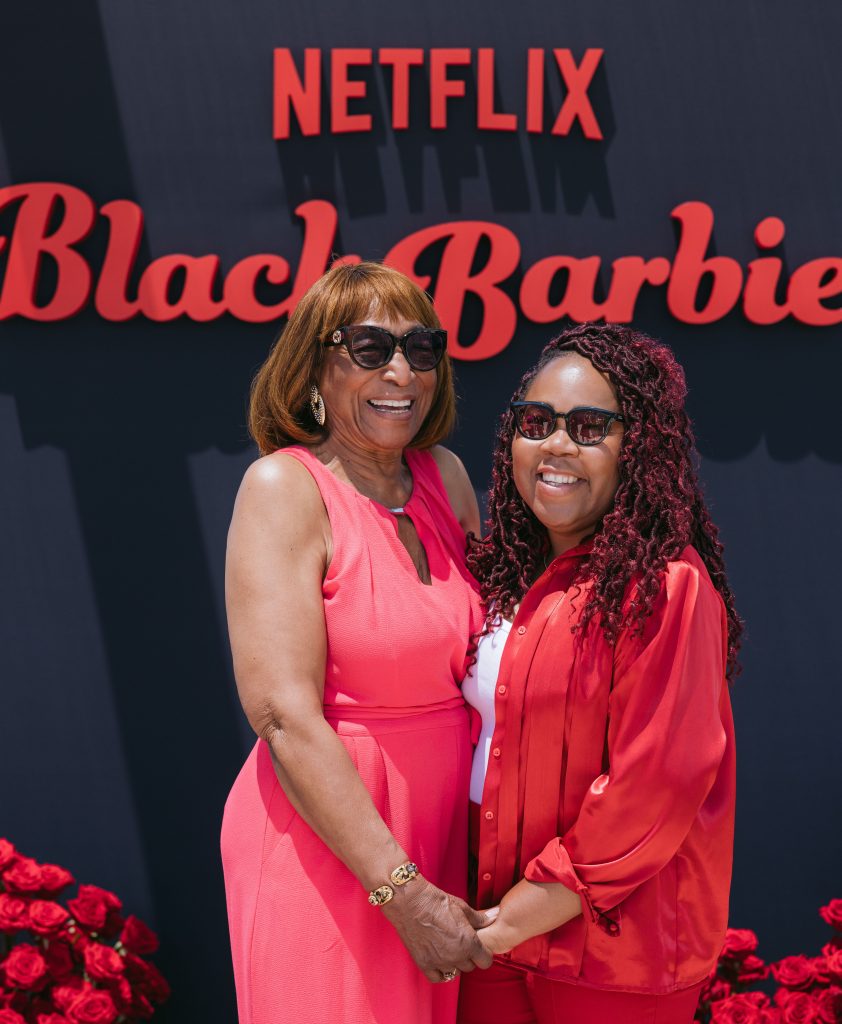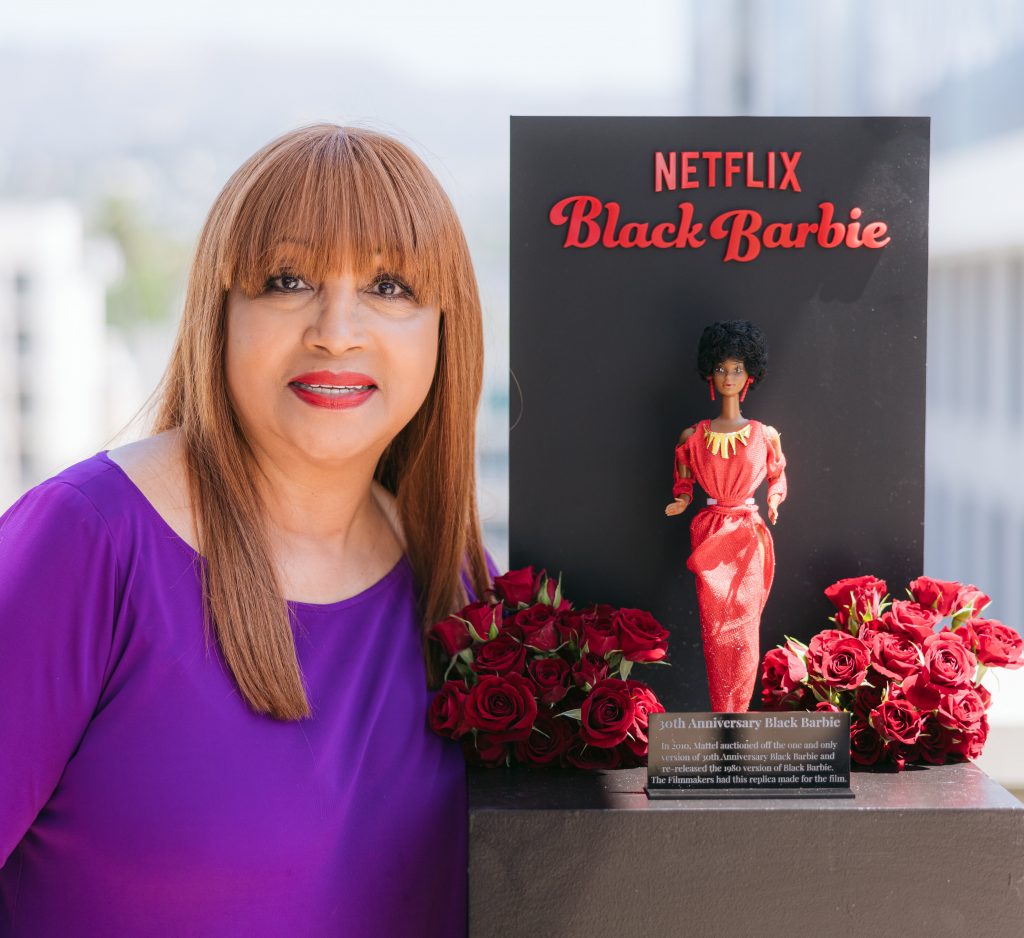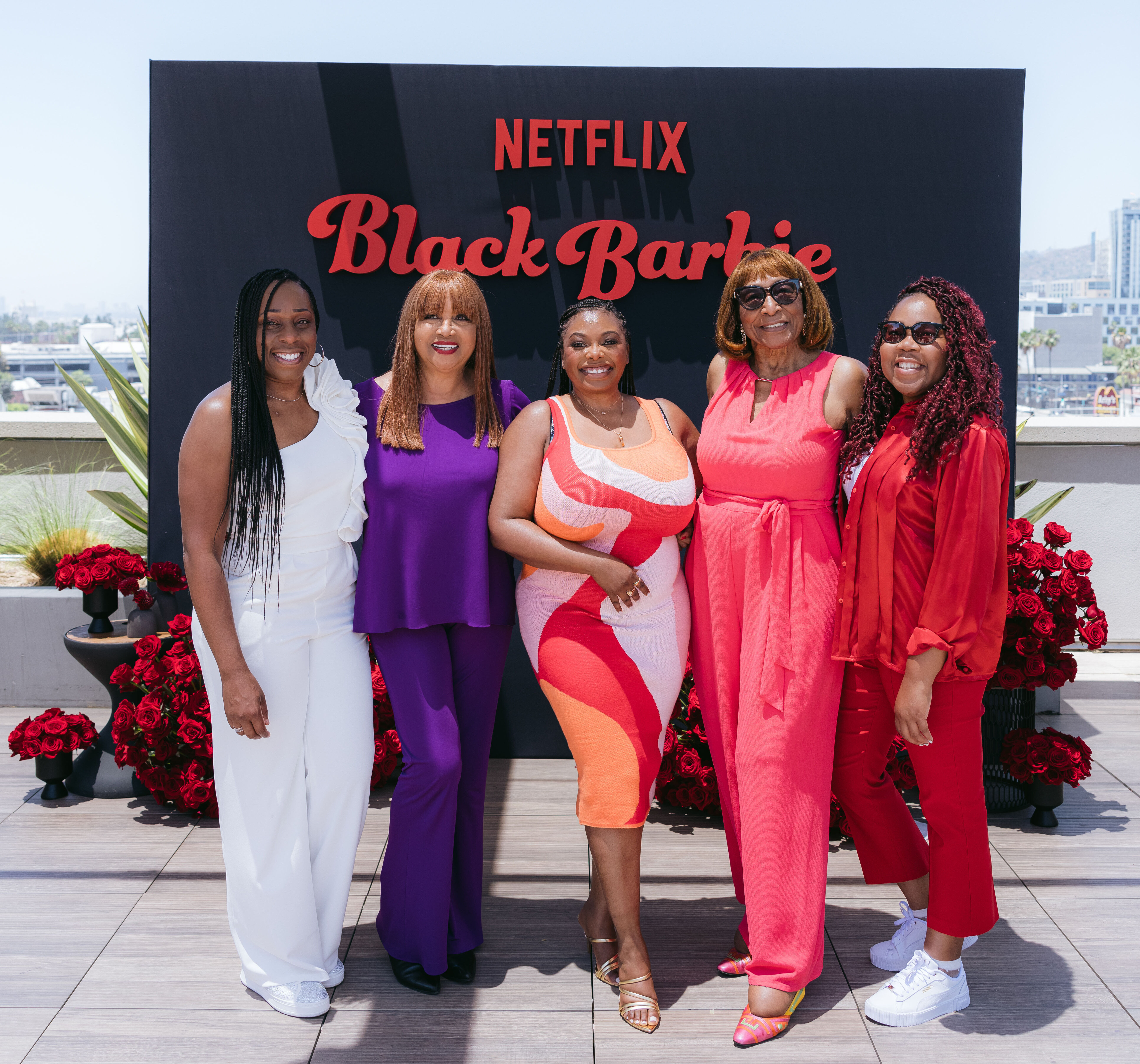The Netflix documentary shines light on the historic legacy of Black dolls

In the new Netflix documentary, “Black Barbie,” director Lagueria Davis explores how the Black Barbie is more than a doll, it’s a part of Black history.
Executive produced by Shonda Rhimes, the film features commentary from a plethora of actresses including Ashley Blaine Featherson-Jenkins and Gabourey Sidibe as well as Congresswoman Maxine Waters, and women that have had the coveted honor of receiving their own Barbie including Shonda Rhimes, ballerina Misty Copeland and Olympic sabre fencer Ibtihaj Muhammad.
Growing up, Davis wasn’t necessarily fond of Barbie dolls, so she was perplexed by her great aunt Beulah Mae Mitchell’s extensive doll collection. Upon learning that Mitchell’s presence at Mattel as one of the company’s first Black employees helped to lay the foundation for there to be the first Black Barbie, the idea for Davis’ documentary was born. The film explores the timelines between the creation of Barbie in 1959 and the two decades that passed before Mattel released “Black Barbie” in 1980.
Related Stories
Black LGBTQ+ People and Allies Celebrate Pride, History and Movement Heroes
Grammy Museum Celebrates Little Richard with Special Screening
Within that 21 years, Mattel released several “friends” of Barbie that were Black including “Francie” and “Christie.” However, it was the hiring of the first Black doll designer, Kitty Black Perkins in 1976, who helped to finally usher in the historic moment of 1980 when the first official “Black Barbie” was released. Unlike her predecessors, the “Black Barbie” had more Afrocentric facial features along with a textured Afro and a red dress with red and gold accessories designed by Perkins.
The documentary goes on to share how Perkins hired fellow LA Trade Tech alumna Stacey McBride-Irby to be a designer at Mattel in the 1990s. During her 15 years at Mattel, McBride-Irby’s many accomplishments include designing the official Alpha Kappa Alpha Centennial Barbie Doll as well as helping to update Barbie’s image with the creation of the “So In Style” line.

McBride-Irby shared advice that she gleaned from Perkins. “You have to learn your craft so that you can set the bar high as with any industry, we have to be the best and Kitty was instrumental in letting me know that.”
While sharing Perkins and McBride-Irby’s historic contributions to Mattel, the documentary also highlights the unfortunate fact that the company is currently without any Black doll designers. For fashion enthusiasts who may be interested in careers in doll design, Perkins gives insight into what skills were integral to her work at Mattel.
“LA Trade Tech took me through all of the steps of becoming a designer. You have to know sketching, flat pattern making, draping, and grading,” she said.
“They teach you how to make fashions for adults and once you learn that, then you have to learn to miniaturize it because Barbie is only 11 and a half inches!”
Speaking of resilience, it was a decade-long journey for Davis to secure the funding needed to bring the documentary to fruition. She cites the Barbie Sheroes collection in 2015 which included the popular Ava DuVernay doll that motivated her to take the project “off the shelf again.”

After becoming a finalist at ABFF (American Black Film Festival) in 2016, the next milestones she accomplished was securing a producer in 2017 and an agent to rep the film in 2018. During this time, Davis would remind herself, “I have to keep going. I didn’t come this far just to get this far. You’re almost there, you’re gonna do it.”
Amid the digital age when many children have tablets as a primary form of entertainment, we asked Davis if she thinks Barbie dolls are still relevant today.
“Yes, I think they’re relevant in tandem [with tablets]. Kids are watching Barbie vlogs, and Barbie has a lot of movies. So, they’re interacting with Barbie that way, which then kind of informs what they buy. For instance, in the movie ‘Barbie: Big City, Big Dreams’ after seeing Barbie ‘Brooklyn’ Roberts, children want the doll, so I think they’re working in tandem, and it gives the dolls relevance today.”
Echoing similar sentiments about the continual prevalence of Barbie even to this day, Stacey McBride-Irby said, “Dolls are still important because they’re the first image that children see themselves in.”
Perkins added, “Dolls are a representation of us and they’re hands-on play. You can’t take a cell phone and dress it or comb its hair. I know that everything is geared towards technology but at some point, there still needs to be hands-on imagination involved when kids play.”
Concluding, when asked what she hopes audiences take away from her film, Davis shared, “When you think of how long it took for the Black Barbie to come into existence, the lack of marketing, and the lack of support that she had, she still soared.
“So, for me, my Aunt Beulah Mae, Kitty, and Stacy, the Black Barbie’s existence is validation of being seen and heard and a company where they didn’t have a voice. The ‘Black Barbie’ documentary has taken on that same significance, the same sort of being seen and heard in a dark space where there aren’t a lot of black women doing this.
“So I would say the call to action is that content for Black women, about Black women, by Black women performs well.”
Watch “Black Barbie” on Netflix.





